Researchers at the Quantum Systems Accelerator (QSA) are advancing trapped-ion quantum computing through engineering advances.


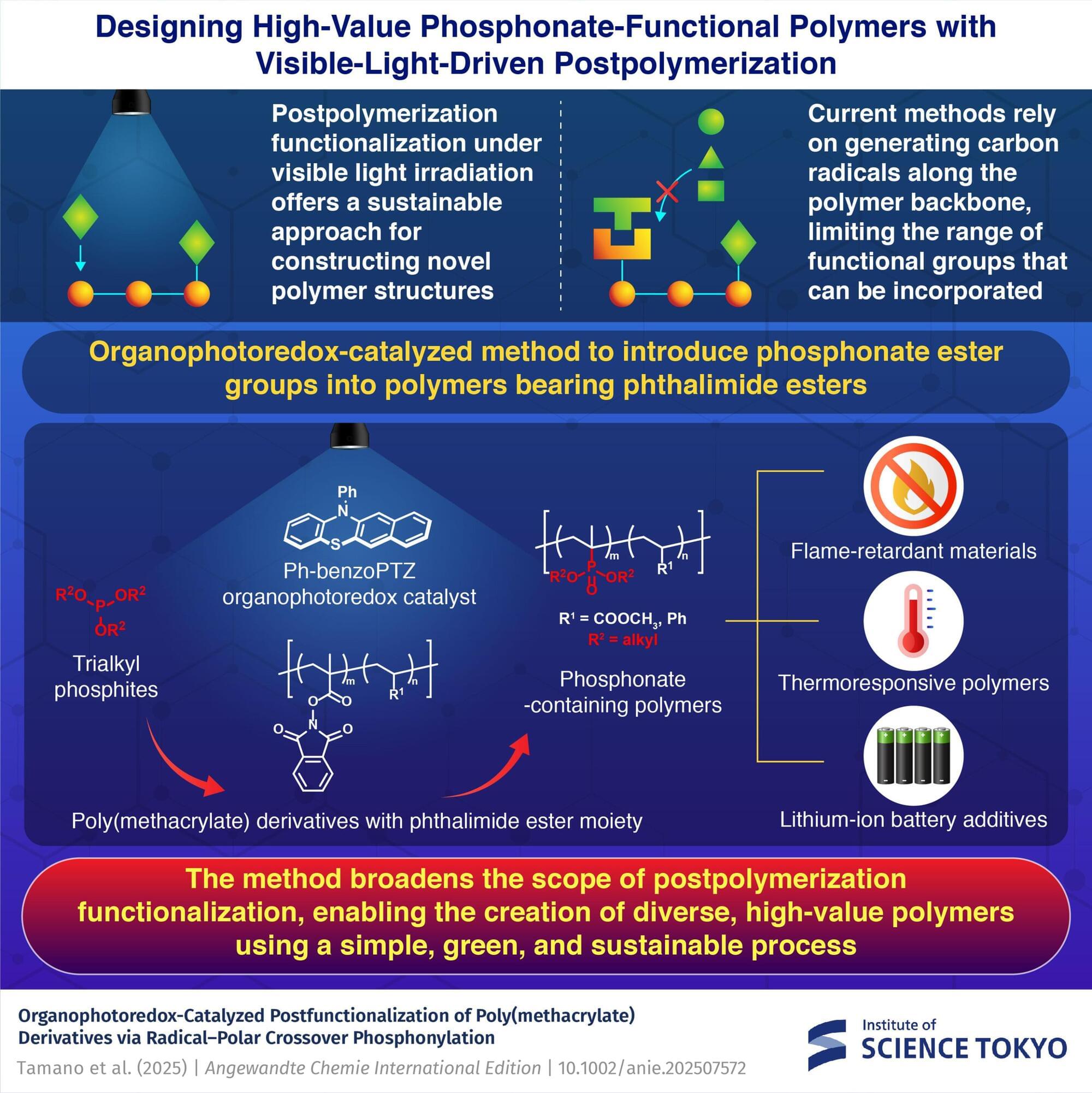
As demand for advanced polymeric materials increases, post-functionalization has emerged as an effective strategy for designing functional polymers. This approach involves modifying existing polymer chains by introducing new chemical groups after their synthesis, allowing for the transformation of readily available polymers into materials with desirable properties.
Postfunctionalization can be performed under mild conditions using visible light in the presence of catalysts, which provides a sustainable route for developing high-value polymers. However, existing methods often rely on generating carbon radicals along the polymer chain, limiting the variety of functional groups that can be introduced.
In a significant advancement, a team led by Professor Shinsuke Inagi from the Department of Chemical Science and Engineering, School of Materials and Chemical Technology at Institute of Science Tokyo (Science Tokyo), Japan, has developed a postfunctionalization technique that allows for the incorporation of phosphonate esters under visible light conditions. This breakthrough paves the way for a broader range of polymer modifications.
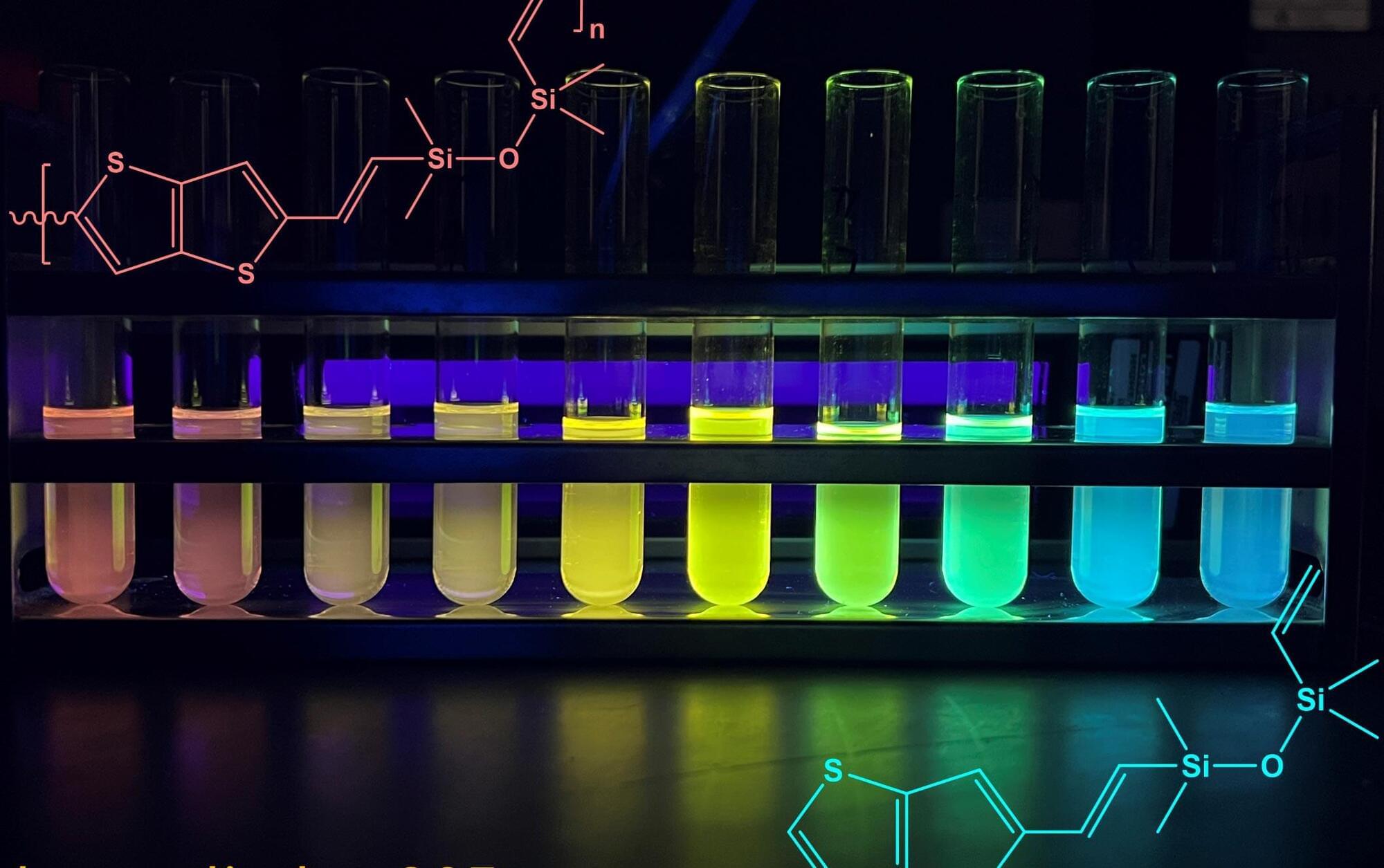
Once considered merely insulating, a change in the angle between silicon and oxygen atoms opens a pathway for electrical charge to flow.
A breakthrough discovery from the University of Michigan has revealed that a new form of silicone can act as a semiconductor. This finding challenges the long-held belief that silicones are only insulating materials.
“The material opens up the opportunity for new types of flat panel displays, flexible photovoltaics, wearable sensors or even clothing that can display different patterns or images,” said Richard Laine, U-M professor of materials science and engineering and macromolecular science and engineering and corresponding author of the study recently published in Macromolecular Rapid Communications.

PFOS, also known as “forever chemicals,” are synthetic compounds popular for several commercial applications, like making products resistant to stains, fire, grease, soil and water. They have been used in non-stick cookware, carpets, rugs, upholstered furniture, food packaging and firefighting foams deployed at airports and military airfields.
PFOS (perfluorooctane sulfonate or perfluorooctane sulfonic acid) are part of the larger class of forever chemicals called PFAS (per-and polyfluoroalkyl substances.) Both types have been linked to a variety of health issues, including liver disease, immune system malfunction, developmental issues and cancer.
Because of their widespread use, PFOS are found in soil, agricultural products and drinking water sources, presenting a health risk. Xiaoguang Meng and Christos Christodoulatos, professors at the Department of Civil, Environmental and Ocean Engineering at Stevens Institute of Technology, and Ph.D. student Meng Ji working in their lab, wanted to identify the most efficient way to remove these toxins from the water.

When Hunga Tonga–Hunga Haʻapai, an underwater volcano near Tonga in the South Pacific Ocean, erupted in 2022, scientists expected that it would spew enough water vapor into the stratosphere to push global temperatures past the 1.5 C threshold set by the Paris Accords. A new UCLA-led study shows that not only did the eruption not warm the planet, but it actually reduced temperatures over the Southern Hemisphere by 0.1 C.
The reason: The eruption formed smaller sulfate aerosols that had an efficient cooling effect that unexpectedly outweighed the warming effect of the water vapor. Meanwhile, the water vapor interacted with sulfur dioxide and other atmospheric components, including ozone, in ways that did not amplify warming.
While that’s good news, the study also suggests that efforts to reverse climate change by loading the atmosphere with substances that react with solar radiation to send heat back out into space, an effort known as geoengineering, are potentially even riskier than previously thought and must take new complications into account.

Engineers at the UCLA Samueli School of Engineering have introduced a universal framework for point spread function (PSF) engineering, enabling the synthesis of arbitrary, spatially varying 3D PSFs using diffractive optical processors. The research is published in the journal Light: Science & Applications.
This framework allows for advanced imaging capabilities—such as snapshot 3D multispectral imaging —without the need for spectral filters, axial scanning, or digital reconstruction.
PSF engineering plays a significant role in modern microscopy, spectroscopy and computational imaging. Conventional techniques typically employ phase masks at the pupil plane, which constrain the complexity and mathematical representation of the achievable PSF structures.
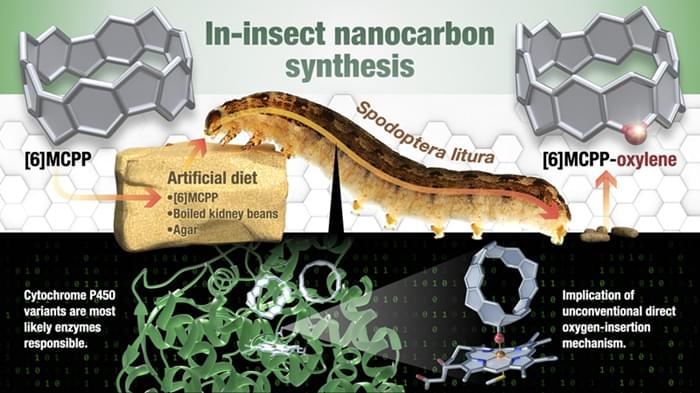
Researchers led by Kenichiro Itami at the RIKEN Pioneering Research Institute (PRI) / RIKEN Center for Sustainable Resource Science (CSRS) have successfully used insects as mini molecule-making factories, marking a breakthrough in chemical engineering. Referred to as “in-insect synthesis,” this technique offers a new way to create and modify complex molecules, which will generate new opportunities for the discovery, development, and application of non-natural molecules, such as nanocarbons.
Molecular nanocarbons are super tiny structures made entirely of carbon atoms. Despite their minuscule size, they can be mechanically strong, conduct electricity, and even emit fluorescent light. These properties make them ideal for use in applications like aerospace components, lightweight batteries, and advanced electronics. However, the precision required to manufacture these tiny structures remains a major obstacle to their widespread use. Conventional laboratory techniques struggle with the fine manipulation needed to put these complex molecules together atom by atom, and their defined shapes make it especially difficult to modify them without disrupting their integrity.
“Our team has been conducting research on molecular nanocarbons, but along with that, we’ve also developed molecules that act on mammals and plants,” says Itami. “Through those experiences, we suddenly wondered — what would happen if we fed nanocarbons to insects?”
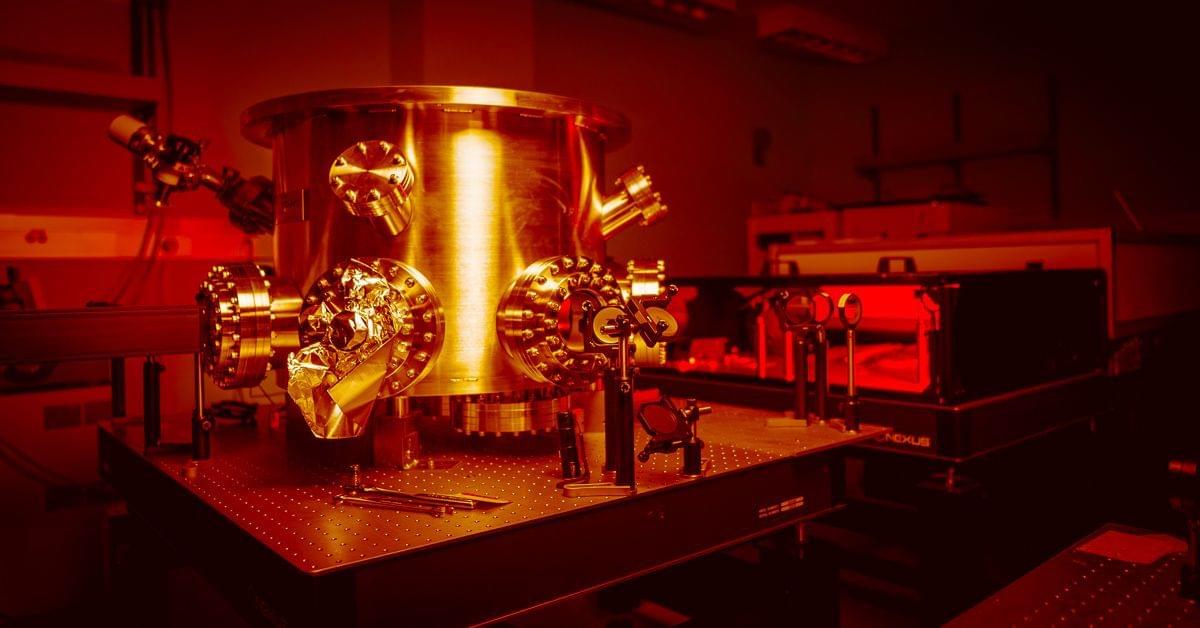
The University of California San Diego is part of a new research partnership led by San Diego-based General Atomics that was recently awarded funding by the U.S. Department of Energy (DOE). The project, called the Target Injector Nexus for Experimental Development (TINEX), aims to overcome critical obstacles in developing and scaling up inertial fusion power plants.
It is one of six awards, collectively totalling $107 million, made by the DOE as part of the Fusion Innovative Research Engine (FIRE) Collaboratives.
“The TINEX project will be important for our collective efforts to make inertial fusion energy practical,” said mechanical engineering professor Javier E. Garay, director of the Fusion Engineering Institute at the UC San Diego Jacobs School of Engineering.
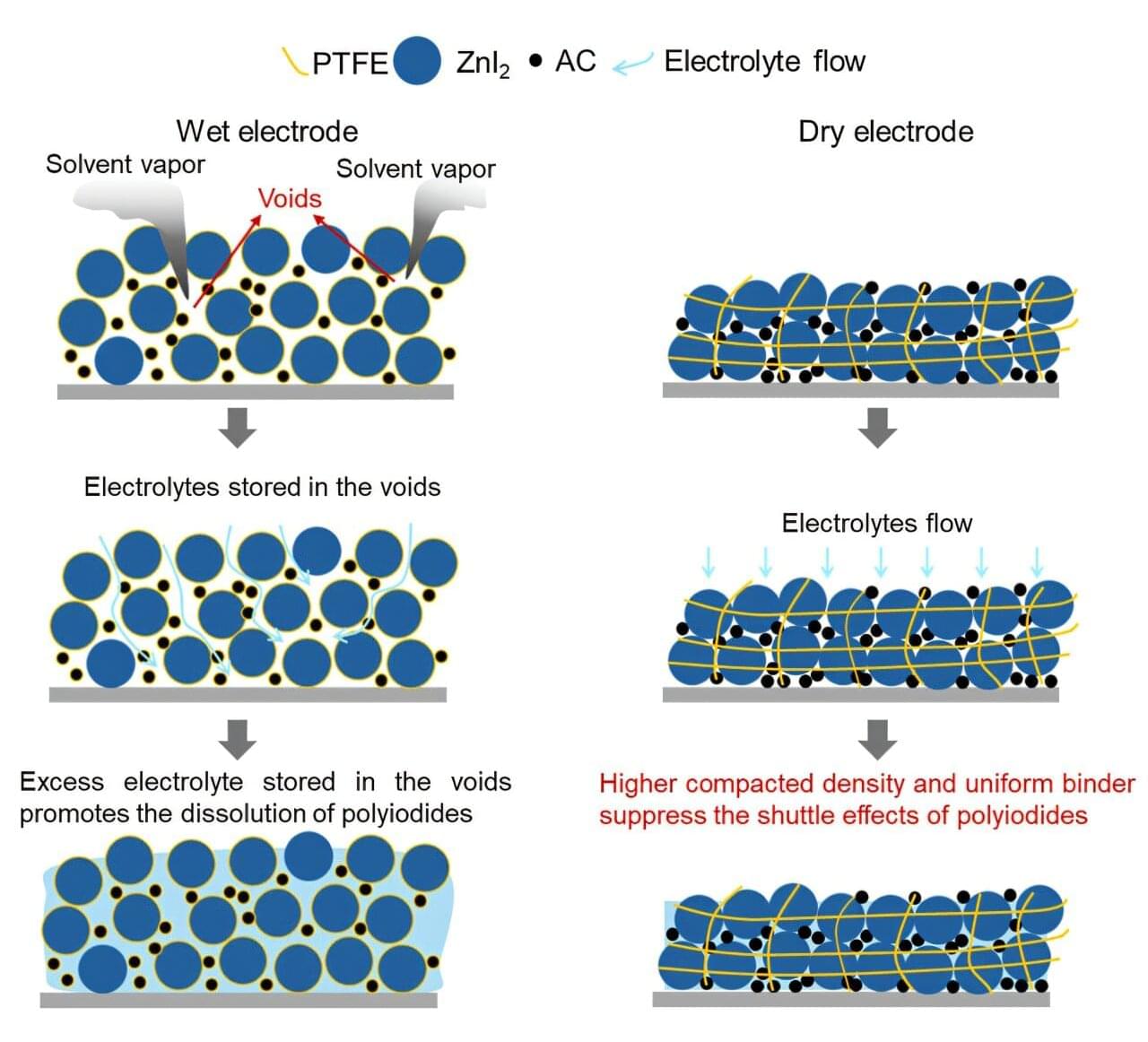
Researchers at the University of Adelaide have developed a new dry electrode for aqueous batteries which delivers cathodes with more than double the performance of iodine and lithium-ion batteries.
“We have developed a new electrode technique for zinc –iodine batteries that avoids traditional wet mixing of iodine,” said the University of Adelaide’s Professor Shizhang Qiao, Chair of Nanotechnology, and Director, Center for Materials in Energy and Catalysis, at the School of Chemical Engineering, who led the team.
We mixed active materials as dry powders and rolled them into thick, self-supporting electrodes. At the same time, we added a small amount of a simple chemical, called 1,3,5-trioxane, to the electrolyte, which turns into a flexible protective film on the zinc surface during charging.
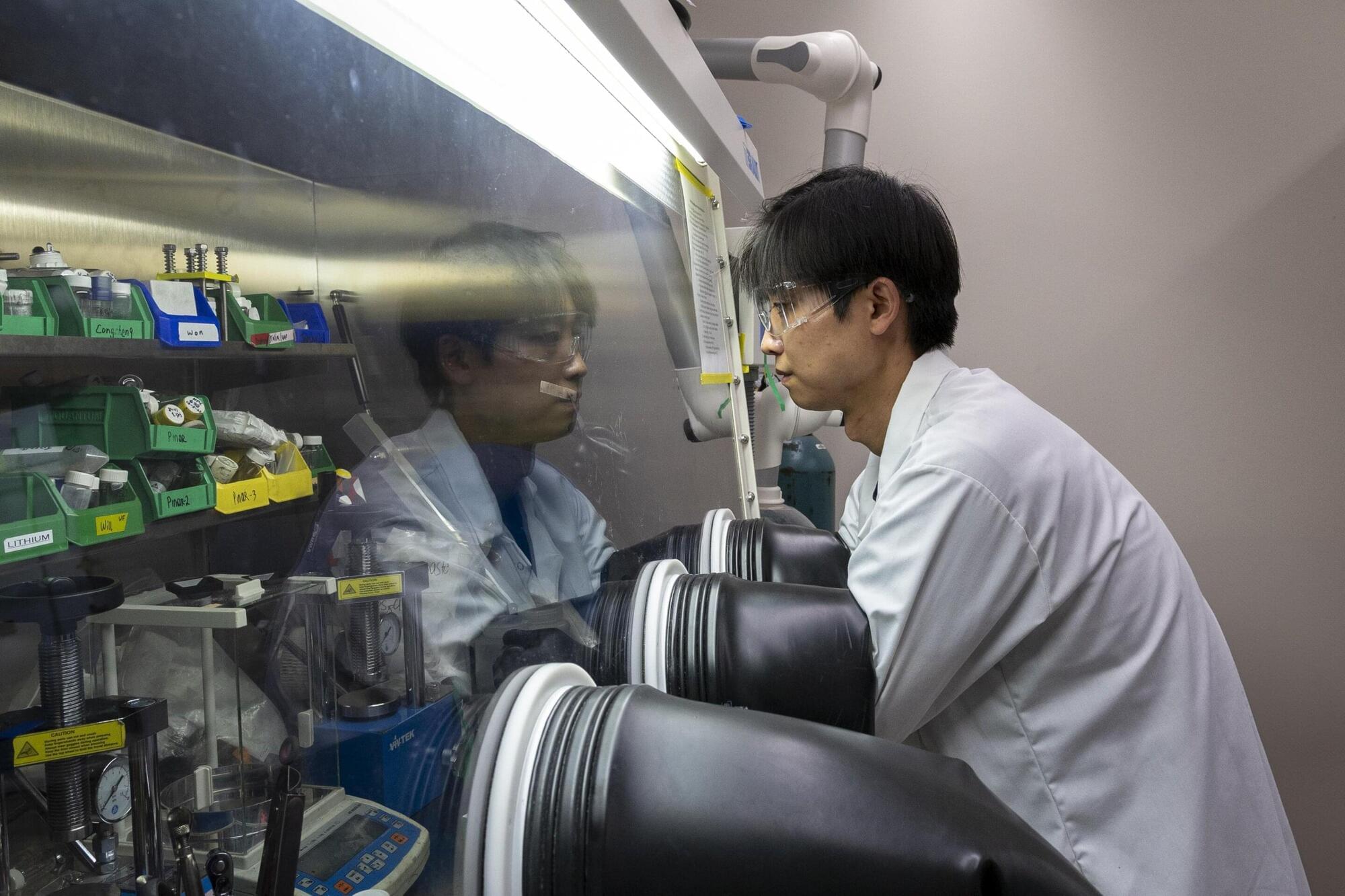
Lithium-ion batteries power everything from electric cars to laptops to leaf blowers. Despite their widespread adoption, lithium-ion batteries carry limited amounts of energy, and rare overheating can lead to safety concerns. Consequently, for decades, researchers have sought a more reliable battery.
Solid-state batteries are less flammable and can hold more energy, but they often require intense pressure to function. This requirement has made them difficult to use in applications, but new research from Georgia Tech could change that.
The research group of Matthew McDowell, professor and Carter N. Paden Jr. Distinguished Chair in the George W. Woodruff School of Mechanical Engineering and the School of Materials Science and Engineering, has designed a new metal for solid-state batteries that enables operation at lower pressures. While lithium metal is often used in these batteries, McDowell’s group discovered that combining lithium with softer sodium metal results in improved performance and novel behavior.